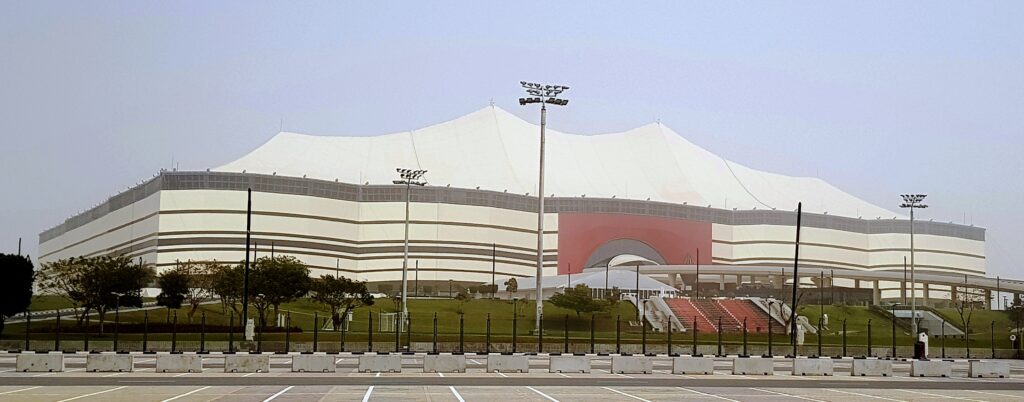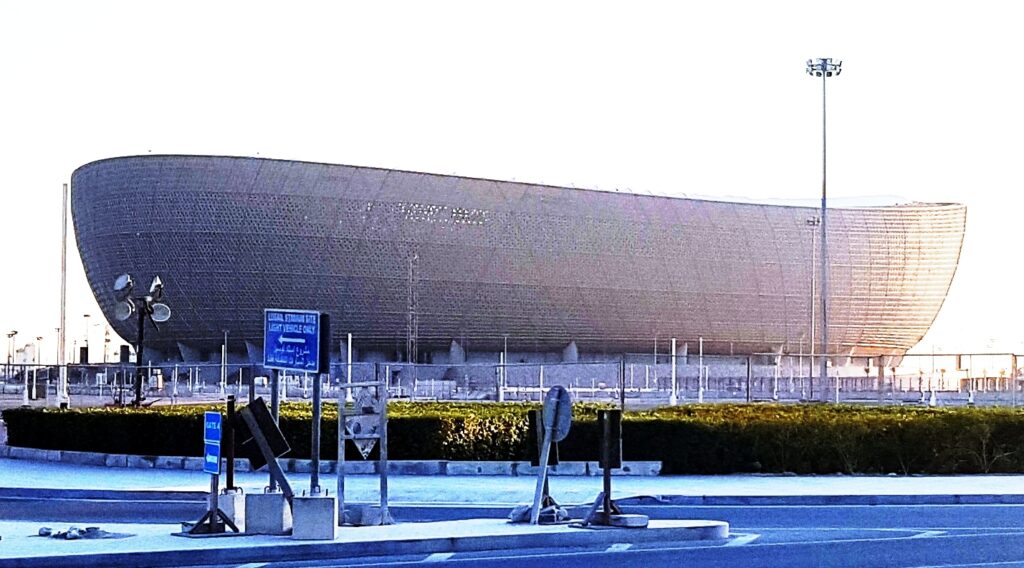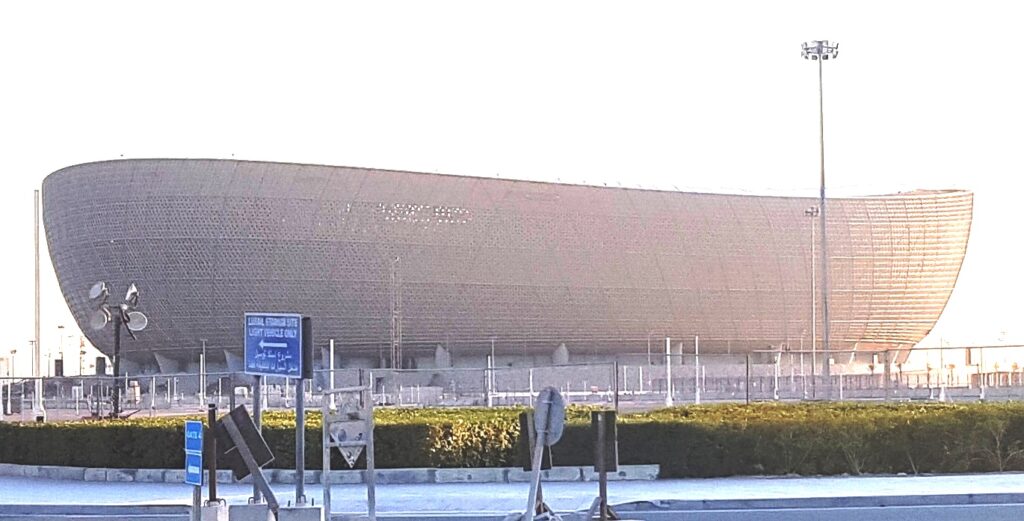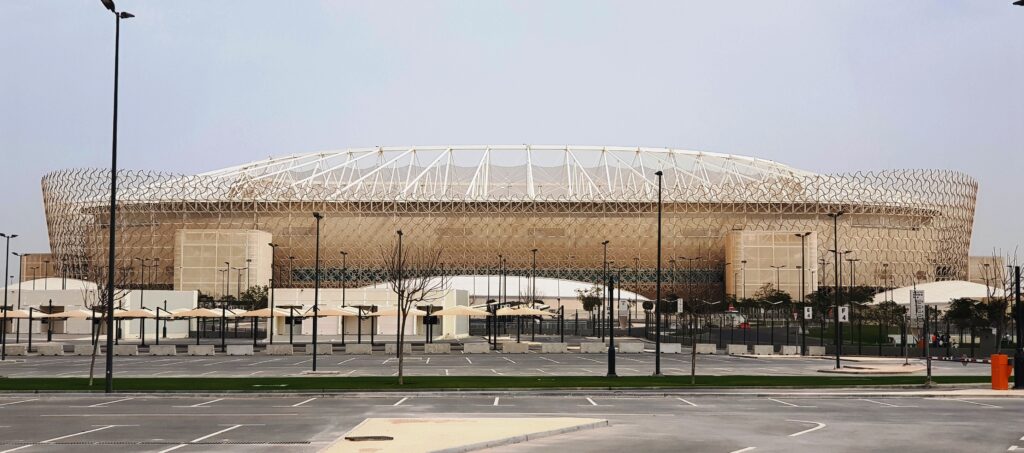The 2022 World Cup will be hosted by eight innovative stadiums that inspired by Qatar’s culture and heritage.
The 2022 FIFA World Cup, will take place from November 21 to December 18.

Al Bayt stadium
Host the opening match of the FIFA World Cup.
Capacity – 60,000 seats
Traditional Nomadic tent design in Al Khor.
The Al Bayt stadium is located in the northern city of Al Khor. It looks like a huge tent covering the entire stadium. The stadium derives its name from ‘Bait-al-Shar’ tents historically used by nomads in Qatar and the Gulf region.

Lusail Stadium
Capacity 80,000 seats
Host stadium for the final. Located at Lusail city.
This stadium will become the centerpiece of Lusail, the metropolis city.
The design of this magnificent stadium is inspired by the feature of the Fanar lamp. Its shape and face inform those of the ornamental forms found throughout the Arab and Islamic lands during civilization.

Education city stadium
Capacity 40,000 seats.
Surrounded by some of Qatar’s leading universities
Hosting, matches through the quarter-finals.
Education city stadium will be a symbol of innovation, sustainability and progress in line with the Qatar national vision 2030 and the goals of the Qatar Foundation. Fans can reach the stadium easily by road or metro. As with all FIFA world cup stadiums, advanced cooling technologies ensure comfortable temperatures for players and fans.

Ahmed Bin Ali stadium
Capacity – 40,000
Located at one of the most traditional cities, Al Rayyan
Ahmad Bin Ali stadium is located on the edge of the desert in Al Rayyan which is known for its love of traditions and local culture. Importantly, location of the popular football team – Al Rayyan sports club.

Al-Janoub stadium
Capacity – 40,000 seats.
Stadium is being built in the southern city of Al Wakra, one of the oldest populated areas in Qatar.
The design of Al Janoub Stadium was inspired by the traditional Dhow boats used in Al Wakrah, which is famous for pearl diving and fishing. After the FIFA world cup, Al Janoub stadium will become a new home for sport and entertainment in Qatar.

Khalifa International Stadium.
40,000 capacity seats.
Located in Al Rayyan, this is known as the home of football in Qatar.
Constructed in 1976, a familiar face that brings communities together.
This stadium welcomed the Asian Games, the Arabian Gulf Cup and the AFC Asian Cup, IAAF World Athletics Championships.
Over the years it has become an ambassador for the Middle East. For people in Qatar and the region, Khalifa International Stadium is an old friend.

Al Thumama Stadium
Capacity – 40,000 seats.
The design represents the Ghafia – A traditional hat worn across the middle east.
Al Thumama Stadium is dynamic, empowering and truly imaginative. In keeping with all of Qatar’s new FIFA world cup venues, this arena has been designed to celebrate Arab culture and traditions. The stadium’s bold, circular form reflects the Ghafia – the traditional woven cap worn by men and boys all across the middle east for centuries.

Stadium 974
Capacity 40,000 seats
Constructed from shipping containers and modular steel.
Stadium 974’s innovative design is inspired by Qatar’s worldwide trade and seafaring. 974 is the international dialing code for Qatar, as well as the exact number of shipping containers used for the construction of the stadium. As well as providing invaluable infrastructure to sporting projects far and wide, stadium 974 also gives global stadium developers and tournament planners a fine example to follow. This stadium is located on the shores of Doha’s dazzling west bay skyline. Stadium 974 is a spectacular venue for the FIFA world cup matches.
The tournament kicks off on Monday, November 21, with a match hosted by the host nation, at the Al Bayt Stadium in Al Khor. The tournament, concludes with the final match, at the Lusail Stadium in Doha on Sunday, December 18.